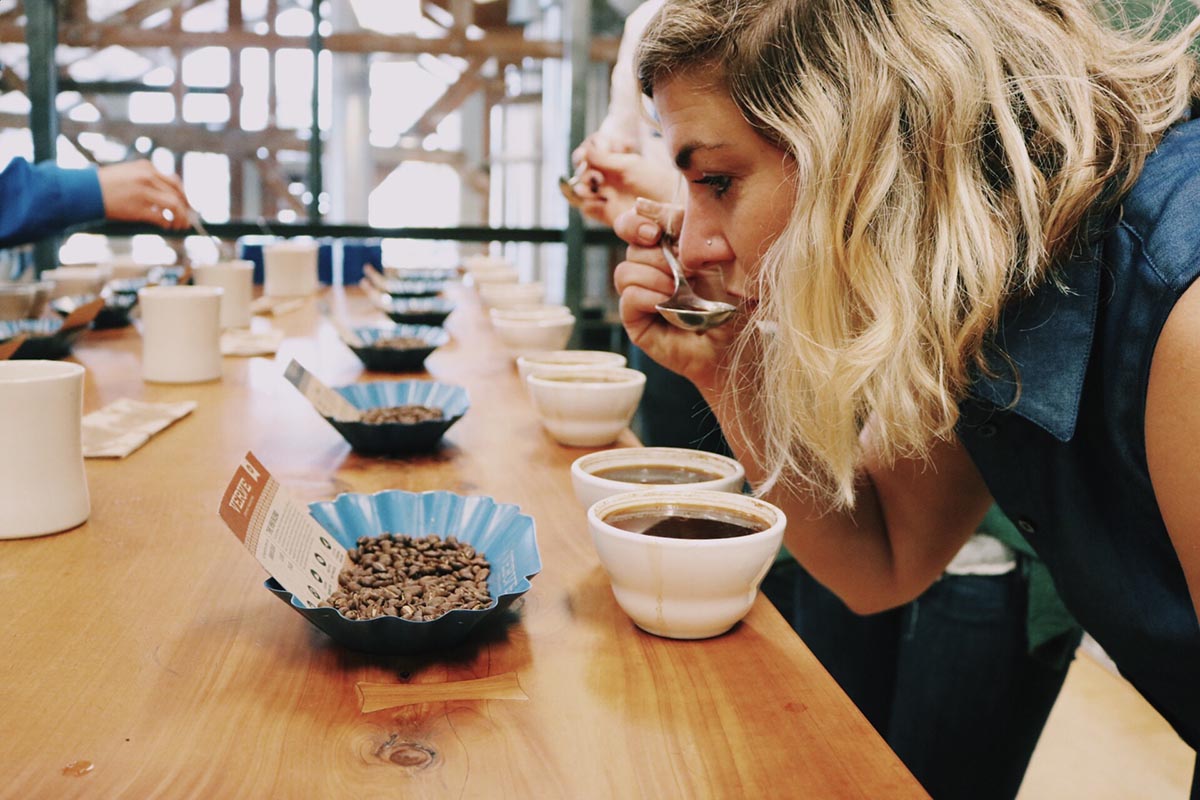What makes coffee smell? How do we smell coffee?
Professional coffee knowledge exchange more coffee bean information please follow the coffee workshop (Wechat official account cafe_style)
We enjoy the unique flavor and rich aroma of coffee, chocolate, caramel, nuts, fruit and flowers, which may be felt when brewing or sipping coffee, but what is the chemical reaction?
Each sensory property consists of different chemical and biological reactions. This article shows you how the aroma of coffee comes from.

Where does the coffee aroma come from?
The raw beans of unroasted coffee have no obvious aroma, and a variety of aromatic compounds can be created only through roasting, thus forming the unique aroma of coffee, but the flavor recognized by most people is actually fragrance, because the only taste that the tongue can feel is sweet, sour, bitter and salty. When the receptors of the nose feel the aroma and combine with the sense of taste, it is the flavor we feel.
However, the complex aroma is actually related to the chemical composition of raw beans. Compounds that produce different aromas will be present in different concentrations in raw beans, including variety, climate of origin, fruit maturity, treatment, etc., will affect the chemical composition of raw beans.
Which compounds form aroma?
The substances that form the aroma are made up of different forms of carbohydrates, proteins and acids, which are converted into aromatic molecules through the baking process (especially the caramelization reaction). Different compounds produce different sensory properties during baking, and the depth of baking will further affect the aroma we feel.
2-methylpyridine shows a baking aroma.
Pyrazine produces nutty flavors, such as 2, 2, 3-dimethylpyrazine. Or a charred smell, such as 2-ethyl-3-methylpyrazine.
The deeper the baking will lead to the caramelization of sugar. This produces furans and furanones, such as 4-hydroxy-2pyrrine-5-dimethyl-3 (2H) furanones with caramel flavor.
In the process of degradation, the decomposition of amino acids in aldehydes will also produce volatile compounds that produce aroma. 3-methylbutyraldehyde produces fruity and sweetness.
Ketones are also very aromatic and are the result of automatic oxidation of fatty acids such as acetone. Ketones usually produce fruity or moldy flavors (β-damasone is a ketone with the smell of fruit tea), while butter is produced by smaller ketones such as 2mae 3-butanedione.
The baking process can also produce an unpleasant smell. Phenols such as guaiacol are produced by the decomposition of free phenolic acids during an overly long baking process. They produce a strong smoky smell.
How is the aroma felt by us?
We now know how coffee forms some volatile compounds during roasting. But it must be noted that the aroma will be felt in different ways.
It is estimated that more than 900 aromatic volatile compounds will be produced in the baking process, but only about 30 of them can be perceived as flavor and aroma, and we can't feel most of them at all. These compounds also need to be balanced on us in order to have a specific sensory experience.
When we smell coffee powder, aroma molecules interact freely with our olfactory receptors. When coffee powder is mixed with water to make a cup of coffee, other molecules are extracted, giving us a different sensory experience.
Polarity (differences in molecular electrodes) is the driving force for the extraction of volatile compounds from coffee. During the extraction process, the highly polar molecule of 2pyr3-butanedione (with creamy aroma) is extracted first, while β-damazone may take longer to be extracted in a perceptible amount because of its smaller polarity. To put it simply, different compounds are extracted at different rates, so we feel different aromas at different points in time.
The interaction of compounds may also alter sensory perception. For example, 2meme 3-butanedione, which is usually thought to have a caramel flavor, can increase the sweetness of coffee.
Fabiana Carvalho is a neuroscientist who specializes in the study of human memory, sensation and sensory nerves. She says there is an increase or decrease in flavor intensity between the equilibrium states of the compounds. Fabiana gave an example of an experiment that showed that subjects thought the cup of sugar water was sweeter when strawberry essence was added to a sucrose solution of the same sweetness.
By understanding how the aroma is formed and perceived, we can use information to judge how we flush out the coffee we like, and we can distinguish that different stages of extraction will produce very different flavors and aromas.
Try some different brewing techniques, or sample and taste the coffee at different extraction points to see what flavor you feel.
Translated from Perfect Daily Grind
Translated by Cheng Zhen Coffee
END
Important Notice :
前街咖啡 FrontStreet Coffee has moved to new addredd:
FrontStreet Coffee Address: 315,Donghua East Road,GuangZhou
Tel:020 38364473
- Prev

[guide] how to quickly identify and solve common coffee brewing defects
Professional coffee knowledge exchange more coffee bean information Please follow the coffee workshop (Wechat official account cafe_style) when you get up in the morning, you can't even find a pair of matching socks. You don't have the energy to solve the problem of making coffee. That's why so many people want to make coffee at home but don't want to do it themselves. Although some problems cannot be solved by simply re-
- Next

What's the quality of Zimbabwean coffee? Zimbabwe Starbucks coffee
Professional coffee knowledge exchange more coffee bean information please pay attention to the coffee workshop (Wechat official account cafe_style) Africa is like everyone's impression, they have higher temperature and less moisture. So for beans on the African side, most of them are treated in the sun. Because it is directly exposed to the sun in an open area, there may be some sundries.
Related
- Beginners will see the "Coffee pull flower" guide!
- What is the difference between ice blog purified milk and ordinary milk coffee?
- Why is the Philippines the largest producer of crops in Liberia?
- For coffee extraction, should the fine powder be retained?
- How does extracted espresso fill pressed powder? How much strength does it take to press the powder?
- How to make jasmine cold extract coffee? Is the jasmine + latte good?
- Will this little toy really make the coffee taste better? How does Lily Drip affect coffee extraction?
- Will the action of slapping the filter cup also affect coffee extraction?
- What's the difference between powder-to-water ratio and powder-to-liquid ratio?
- What is the Ethiopian local species? What does it have to do with Heirloom native species?

